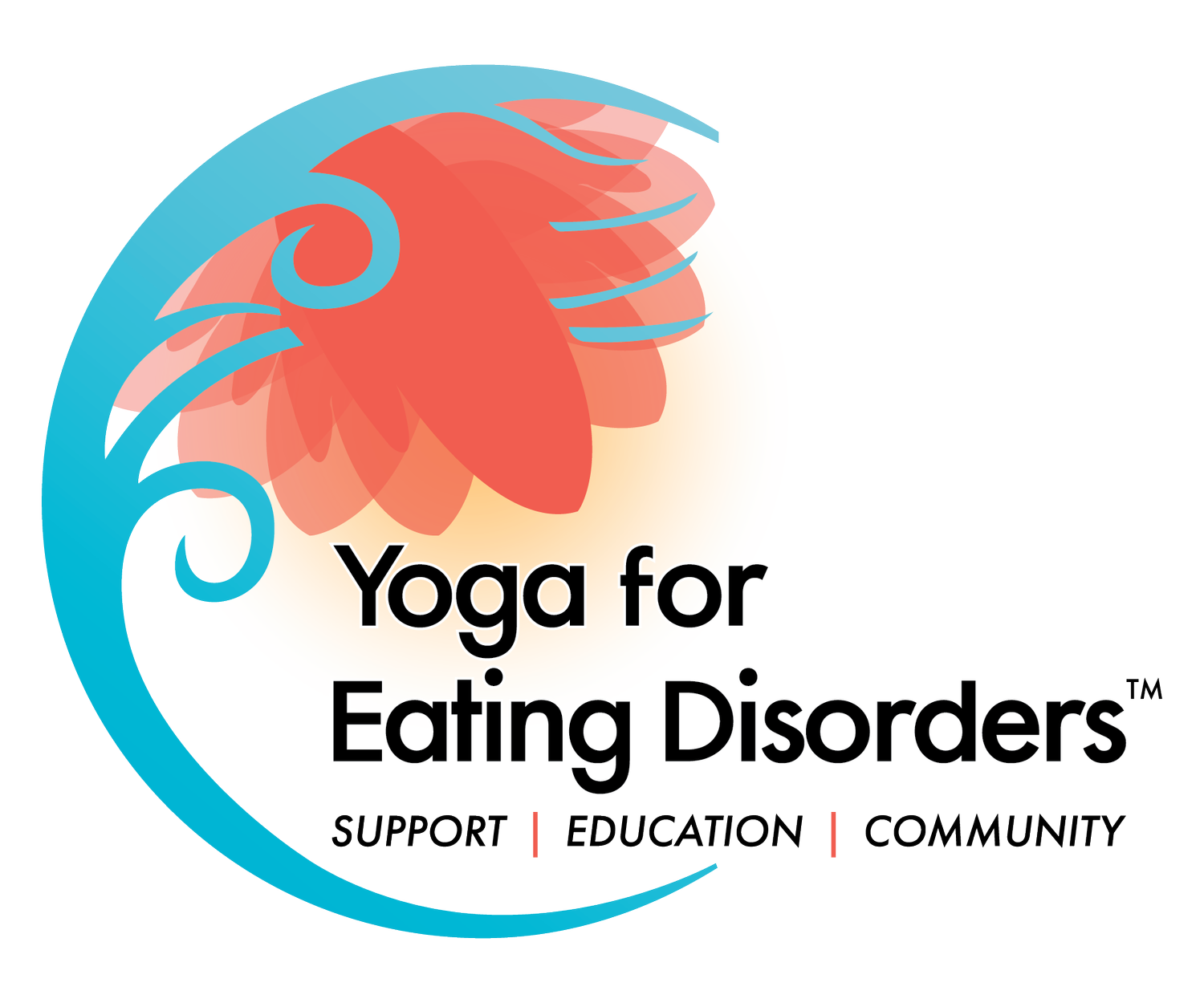What Yoga Teachers Need to Know About Eating Disorders
(Note: This post originally appeared in my article 7 Truths About Eating Disorders Every Yoga Teacher Needs to Know on Yoga Journal.com.)
In my 20-plus years navigating the highs and lows of anorexia recovery, yoga has facilitated a great deal of my healing and empowerment. Yoga taught me how to connect from the inside out. I rest my mind on my breath as I embody the characteristics that are essential to my ability to sustain a well-supported recovery. I sense my strength and confidence in Warrior Poses, courage in Wheel Pose, grace in Dancer’s Pose, openness in Triangle Pose, peace in Hero’s Pose, and support in Child’s Pose. I fold and surrender, reach and grow, twist and energize. This is the yoga of my eating disorder recovery.
A gift of my personal journey is now having the good fortune of working with others in eating disorder recovery as a certified yoga therapist. I’m a passionate professional in both the eating disorder and yoga worlds, which is why I feel called to offer my colleagues and peers information on this topic. My hope is that I’m able to expand the yoga community’s general awareness and knowledge of this illness.
According to the National Eating Disorders Association, 20 million women and 10 million men in America will have an eating disorder at some point in their lives. Eating disorders are serious mental conditions related to persistent eating behaviors that negatively affects one’s physical, mental, emotional, and spiritual health. Characterized by an obsessive preoccupation with weight, food, and body shape, eating disorders have the highest mortality rate of any psychiatric illness, and suicide is also common.
Given that 30 million people in this country suffer from an eating disorder, it’s highly likely that if you’re a yoga teacher, you’ll come across students that are affected. And because physical side effects—some of which are very dangerous—are associated with eating disorders, it’s important for yoga professionals who lead asana-based classes to have a basic understanding of this illness. Even in yoga settings where asana is not the primary focus, a general knowledge may be helpful, as the quiet practice of meditation, for example, may present unique challenges for those affected by eating disorders.
To help you navigate these tricky waters, here are eight truths about eating disorders I believe are important for yoga professionals to know. In no way am I suggesting that you are expected to diagnose or treat an eating disorder, or even interact with your students with eating disorders differently. Rather, my hope is that you’ll read this article and file it for reference; this information is for your awareness as a yoga teacher and the yoga community as a whole.
Eating disorders are serious, but treatable, mental and physical illnesses that can affect people of all body sizes, races, genders, socioeconomic statuses, sexual orientations, abilities, and ages. They may be caused by a range of biological, psychological, and sociocultural factors.
There are several types of eating disorders, the most common being anorexia nervosa, bulimia nervosa, and binge eating disorder (BED). Other types include other specified feeding or eating disorder, orthorexia, avoidant restrictive food intake disorder, pica, and rumination disorder. Symptoms associated with these disorders are ultimately ways of coping with trauma and other painful feelings and life events.
The feeling of taking up space can be extremely uncomfortable for individuals affected by eating disorders, because so much of the disorder is about shrinking physically, mentally, and/or emotionally. Big poses like warriors and other upright, expansive positions can bring on feelings of vulnerability and fear. With practice and time in a supportive environment, these types of poses can be quite healing, connecting individuals to the virtues of strength and confidence, for example.
Students with eating disorders may also be uncomfortable taking deep breaths, for fear of feeling their bodies expanding. (As a result, these students often breathe from their chests.) With time and practice, breathing can become more comfortable and even life-changing, offering individuals a new sense of internal safety and a calming effect.
Individuals affected by eating disorders are prone to severely negative body image and body dysmorphia, which can make yoga class extremely challenging. Body comparing and a preoccupation with how one’s body looks or performs can make it difficult to stay present. Yoga can be helpful in teaching these students tools for practicing presence on and off the mat.
Medical complications include blood pressure issues, electrolyte imbalances, reduction of bone density, muscles loss and weakness, severe dehydration, fainting, fatigue, hair loss, dental issues, hair loss, dry skin, digestive problems, circulation problems, and hormonal imbalances.
Exercise addiction can be a component of an eating disorder, and yoga can sometimes be used to that end.
Recovery from an eating disorder is a long-term process that typically requires therapeutic support and often treatment. Yoga can be instrumental in this process, offering practitioners embodied experiences that, over time, contribute to mending the severed relationship with one’s body and self-esteem.
Yoga has the powerful potential to support healing of all kinds in students, and yoga teachers have the special opportunity to guide movement and embodied experiences that encourage this transformation. The greater our awareness of possible life experiences of students, the greater our ability to teach from a place of compassion and sensitivity. An eating disorder is one such life experience, and yoga holds the possibility of such tremendous healing for those affected.

